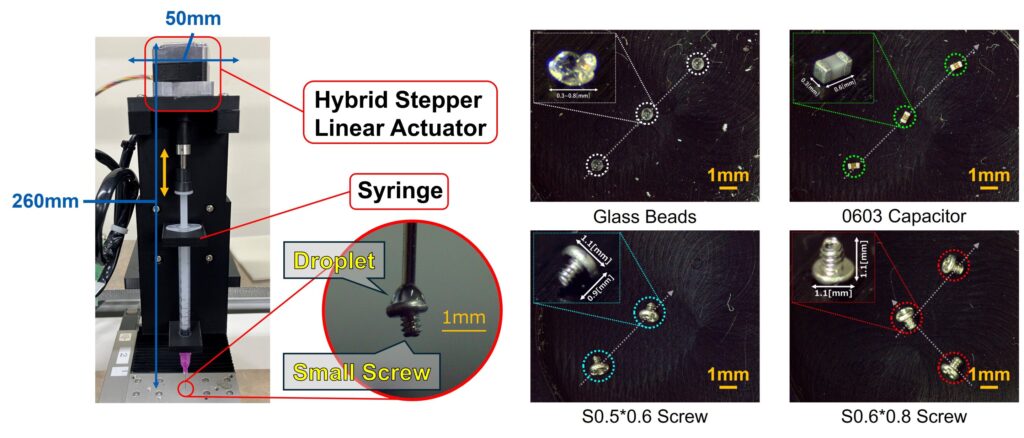Miniaturized electronics and intricate objects require a certain finesse. Researchers have looked into the development of a machine capable of these fine movements, while identifying and categorizing the objects using machine learning.
Advances in technology have led to the miniaturization of many mechanical, electronic, chemical and biomedical products, and with that, an evolution in the way these tiny components and parts are transported is necessary to follow. Friction-based or pneumatic-based mechanisms can be disruptive and damaging to small, complex-shaped and fragile objects, which is what most conventional microgrippers operate with.
Researchers aimed to solve this problem by developing a pneumatic-free and frictionless system using machine learning-based object detection grippers powered by capillary force to handle picking up and placing tiny components and objects. These capillary force grippers can be useful in many fields aside from miniature electronics, such as geological microfossil classification, cell manipulation and the precise sorting of minuscule complex-shaped fragile components.
Their research is published in the journal Advanced Intelligent Discovery.
These results demonstrated success in the capillary force grippers using machine learning to classify objects; the machine learning that goes with the microgrippers reduces the workload that comes with categorizing and sorting sub-millimeter-sized objects. 60 objects in total, from four separate categories, were successfully handled with an average operation time of 86 seconds.
Capillary force, which is the force that acts on an object and a liquid surface, comes into play with the microgrippers by using a liquid bridge. This technique uses a small volume of liquid to connect two surfaces. This works thanks to the surface tension of the liquid, which allows for the bridge effect to take place and allows for more delicate maneuvers of the grippers. In previous studies, only simple objects were used and none were smaller than a millimeter. Here, researchers challenge their capillary force microgrippers with complex shapes and sub-millimeter sizes.
Delving into the droplet side of things, the results determined that the smaller the volume of liquid used, the better. Smaller droplets were shown to improve the stability of the grippers in addition to reducing placement error; this is because the smaller the droplet, the greater the capillary force is.
“This study demonstrates that integrating capillary force grippers with machine learning enables an automatic classification and placement system for sub-millimeter-sized complex-shaped fragile objects,” said Ohmi Fuchiwaki, associate professor at Yokohama National University and author of the study.
Future work for this project includes further reducing task time, ideally by integrating electric heating wires for decreasing the placing time, and expanding what liquids are compatible with the device. Expanding liquid compatibility allows for more accessibility in the future for other tasks, such as microfossil classification or the manipulation of biological cells.
“Ultimately, the goal is to establish a reliable automatic classification and placement technology for sub-millimeter-sized complex-shaped objects, with applications not only in geological, medical, and precision engineering fields but also in replicating traditional crafts such as diatom art, which have previously relied on manual work,” said Fuchiwaki.
These tools and accompanying research are important for the advancement of automated micromanipulation for complex tasks, which can be tedious, expensive and time-consuming when done manually or using conventional methods.
Satoshi Ando, Naoto Watanabe, Chihiro Sekine, Shogen Sekiguchi and Ohmi Fuchiwaki of the Department of Mechanical Engineering at Yokohama National University contributed to this research.
More information:
Satoshi Ando et al, Autonomous Machine Learning‐Based Classification and Arrangement of Submillimeter Objects Using a Capillary Force Gripper, Advanced Intelligent Discovery (2025). DOI: 10.1002/aidi.202500068
Citation:
Microgrippers successfully developed to handle sub-millimeter-sized, complex objects (2025, October 21)
retrieved 22 October 2025
from https://techxplore.com/news/2025-10-microgrippers-successfully-millimeter-sized-complex.html
This document is subject to copyright. Apart from any fair dealing for the purpose of private study or research, no
part may be reproduced without the written permission. The content is provided for information purposes only.

